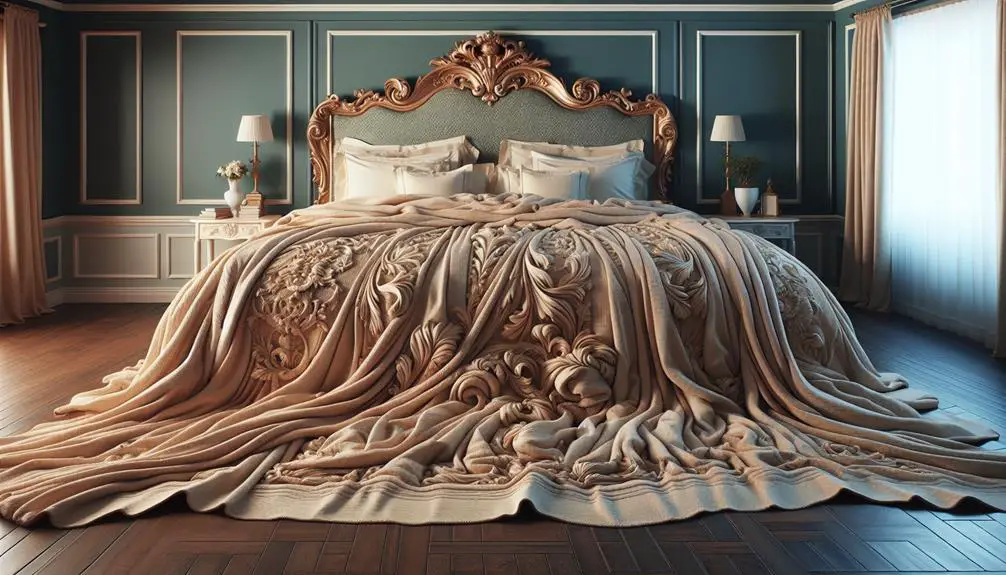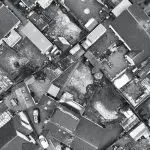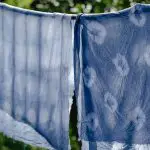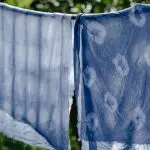When considering the yardage required for a king-size blanket, one might not realize that factors beyond just size play a crucial role in the amount of fabric needed. The complexity of patterns, the thickness of the material, and any extra layers all contribute to the final yardage calculation.
So, if you're wondering how many yards it takes to craft a cozy king-size blanket, let's unravel the details together to ensure your project turns out just right.
Table of Contents
Key Takeaways
- Standard king blankets require 6 to 9 yards of fabric
- Consider fabric width, overhang, and pattern matching
- Efficient cutting and layout optimize fabric for king size blankets
- Strategic planning reduces waste and enhances fabric efficiency
Understanding King Size Blanket Dimensions
When crafting a king size blanket, it's essential to grasp the dimensions to ensure a perfect fit for your bed. A standard king blanket typically measures around 108 inches by 90 inches, but variations exist due to manufacturers or unique designs. Understanding these dimensions is crucial for selecting the right amount of fabric.
The yardage of fabric required for a king size blanket can vary between 6 to 9 yards, depending on the desired length and width of the blanket. It's advisable to consider additional fabric for hems, borders, or any decorative elements you may want to add to your blanket. By knowing the standard dimensions and estimated yardage, you can accurately plan and create a custom king size blanket that fits your bed perfectly.
Calculating Fabric Yardage for a King Blanket
To ensure the perfect fit for your king size blanket, understanding how to calculate the fabric yardage is essential. When planning for your project, it's crucial to take into account the specific dimensions of the blanket, the type of fabric being used, and any design elements such as pattern matching. Here are some key points to consider:
- Consider Fabric Width: The width of the fabric will impact how much yardage you need to purchase. Make sure to account for the width when calculating the total yardage required.
- Account for Overhang: If you desire the blanket to have a generous overhang on the sides of the mattress, ensure to factor this into your calculations to avoid coming up short.
- Plan for Pattern Matching: If your fabric has a specific pattern that needs to be matched across seams, you'll need extra yardage to ensure the patterns align correctly.
Factors Influencing Fabric Requirements
When planning for a king size blanket, it's crucial to consider three key factors that influence fabric requirements:
- Size and dimensions: The size and dimensions of the blanket will determine the base yardage needed.
- Fabric type: The fabric type can affect how the material drapes and its overall bulk.
- Pattern complexity: Complex patterns or directional prints may require extra yardage to ensure proper alignment and pattern matching on the finished blanket.
Size and Dimensions
Considering the dimensions of a king size blanket is crucial for determining the fabric requirements necessary for crafting a generous coverage. A standard king size blanket typically measures around 108 inches by 96 inches, requiring sufficient fabric.
However, the specific dimensions of a California king size blanket are slightly different at 102 inches by 110 inches, influencing the fabric yardage needed.
To create a two-layered king size blanket, you'll need to double the fabric requirements to accommodate both top and bottom layers. Remember to consider the desired overhang or drop of the blanket on the sides of the bed when calculating the necessary fabric yardage.
Accurate measurements and calculations are essential to ensure you have the right amount of fabric for a properly sized king size blanket.
Fabric Type
Exploring different fabric types for a king size blanket significantly impacts the total yardage required due to varying factors like weight, width, and texture. The yards per fabric type can vary greatly; for example, a lightweight, wide fabric may require fewer yards compared to a heavier, narrower one.
When selecting a fabric, it's crucial to consider not only the number of yards per inch but also the drape, warmth, and texture desired for the blanket. Fabrics with stretch or significant shrinkage potential may need additional yardage to accommodate these characteristics properly.
Understanding how different fabric types influence yardage requirements is essential for accurately estimating the amount of fabric needed for a king size blanket.
Pattern Complexity
Pattern complexity significantly impacts the amount of fabric required for a king size blanket. When choosing a pattern for your blanket, consider the following:
- Precision and Alignment: Detailed or intricate patterns may demand more fabric due to the precision and alignment required.
- Efficiency: Simple, repeating patterns can be more efficient in fabric usage compared to complex, irregular designs.
- Coverage Consideration: Think about the scale and placement of the pattern on the blanket when estimating fabric yardage.
Opting for a straightforward design can help minimize fabric waste and ensure accurate coverage for your king size blanket.
Sample Calculation for Yardage
To calculate the yardage needed for a king size blanket, simply double the width of the blanket in yards to account for the two layers. For a standard king size blanket that measures 76 by 80 inches, you'd require approximately 8 yards of fabric to create a cozy double-layered blanket.
To achieve this, you can sew together two pieces of fleece, each measuring 4 yards wide, ensuring that the final product matches the desired width for the blanket.
Choosing coordinating prints or colors of fleece can enhance the visual appeal of your king size blanket project, adding a personal touch to your creation.
Additional Tips for Blanket Making
When making a king size blanket, consider the various blanket size options available and choose the one that best suits your needs.
Additionally, pay attention to the material used to ensure durability and comfort in your finished product.
These simple tips can make a significant difference in the quality and longevity of your homemade blanket.
Blanket Size Options
How can you ensure your king size blanket is both visually appealing and cozy? When deciding on the size of your blanket, consider the following tips:
- Opt for a standard king size measurement of approximately 108 inches by 90 inches for a luxurious feel.
- Choose coordinating prints or colors for the two layers to enhance the aesthetic appeal of your blanket.
- Ensure a snug fit by cutting and sewing two panels of fabric to match the desired measurements.
Material and Durability
Selecting the right fabric is crucial for ensuring the durability and comfort of your king size blanket. When considering fabric durability, opt for high-quality materials such as fleece, wool, or quilted fabrics. These heavy-weight options provide warmth and coziness while also lasting longer.
Checking the width of the fabric is essential to calculate the necessary yards accurately for a well-proportioned blanket without seams. Prioritize washability, softness, and colorfastness when choosing the fabric to maintain the appearance and performance of your king size blanket over time.
Choosing the Right Fabric for Size
To ensure your king size blanket fits perfectly, consider the fabric's softness, durability, and warmth when choosing the right material. When selecting the fabric for your king size blanket, keep the following factors in mind:
- Softness: Opt for a fabric that's gentle on the skin and cozy to the touch, such as fleece or flannel, to enhance the comfort of your blanket.
- Durability: Choose a sturdy fabric that can withstand regular use and washing without losing its integrity, ensuring your king size blanket stays in top condition for years to come.
- Warmth: Prioritize materials that provide adequate insulation and warmth, like plush materials, to keep you snug and cozy during colder nights.
Efficient Fabric Usage Techniques
To efficiently utilize fabric for a king-size blanket, precision in cutting and strategic planning of pattern layouts are essential. When cutting fabric for a king-size blanket, using a yardstick to measure accurately is crucial.
Consider the fabric width to optimize yardage usage and minimize waste. Calculate the total yardage needed based on the desired dimensions of the blanket. Efficient cutting techniques, such as nesting pattern pieces, can help maximize fabric utilization.
By strategically planning the layout of pattern pieces on the fabric, you can minimize leftover scraps and ensure optimal use of the material. Taking the time to plan your cuts and layout carefully can make a significant difference in how effectively you use the fabric, ultimately leading to a more efficient and resourceful blanket-making process.
Frequently Asked Questions
How Many Yards of Fabric Is a King Size?
In making a king size blanket, the yardage varies depending on fabric width and desired length. It's crucial to measure mattress dimensions for accurate coverage. Ordering extra fabric is wise for sewing adjustments.
How Many Yards Do I Need for a King Size Quilt?
To estimate fabric needs for a king size quilt, consider factors like design, borders, and backing. Consult guides or calculators for accuracy. For my project, I'll calculate around 8 yards for the quilt top alone.
How Many Yards of Fabric Do I Need for a King Size Headboard?
When making a king size headboard, I usually need 4-6 yards of fabric. Consider factors like width and design complexity. Upholstery fabrics work well for durability. Consulting professionals or tutorials helps with accurate measuring and crafting techniques.
How Many Yards of Fabric Do I Need for a King Size Dust Ruffle?
I typically need around 6 yards for a tailored look, 9 for shirred, or box pleated style when creating a king size dust ruffle. It's essential to consider fabric width and consult experts for accurate measurements.
- Polyamide Melting Temperature - July 1, 2025
- Polyamide Material Properties - July 1, 2025
- Polyamide Material Meaning - July 1, 2025







